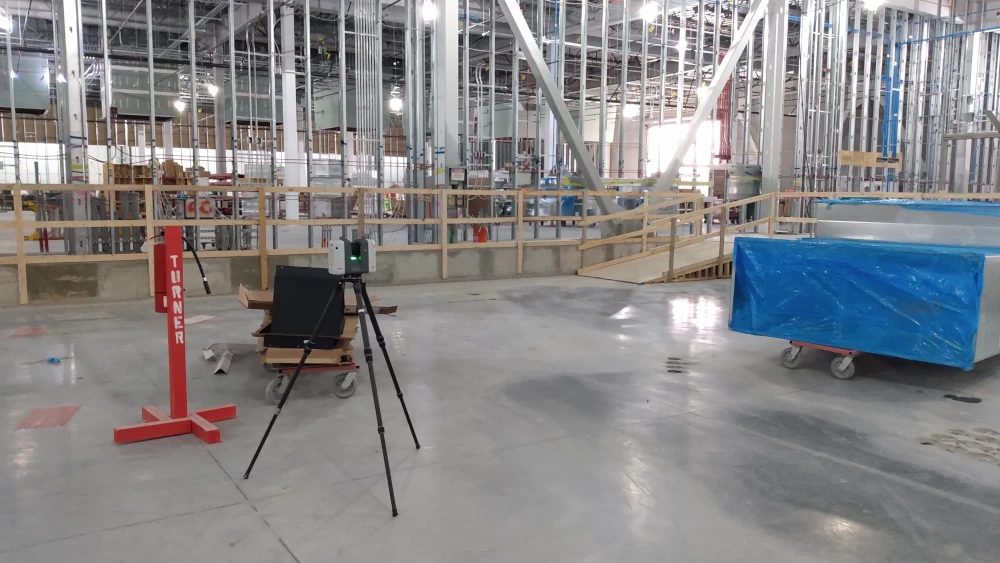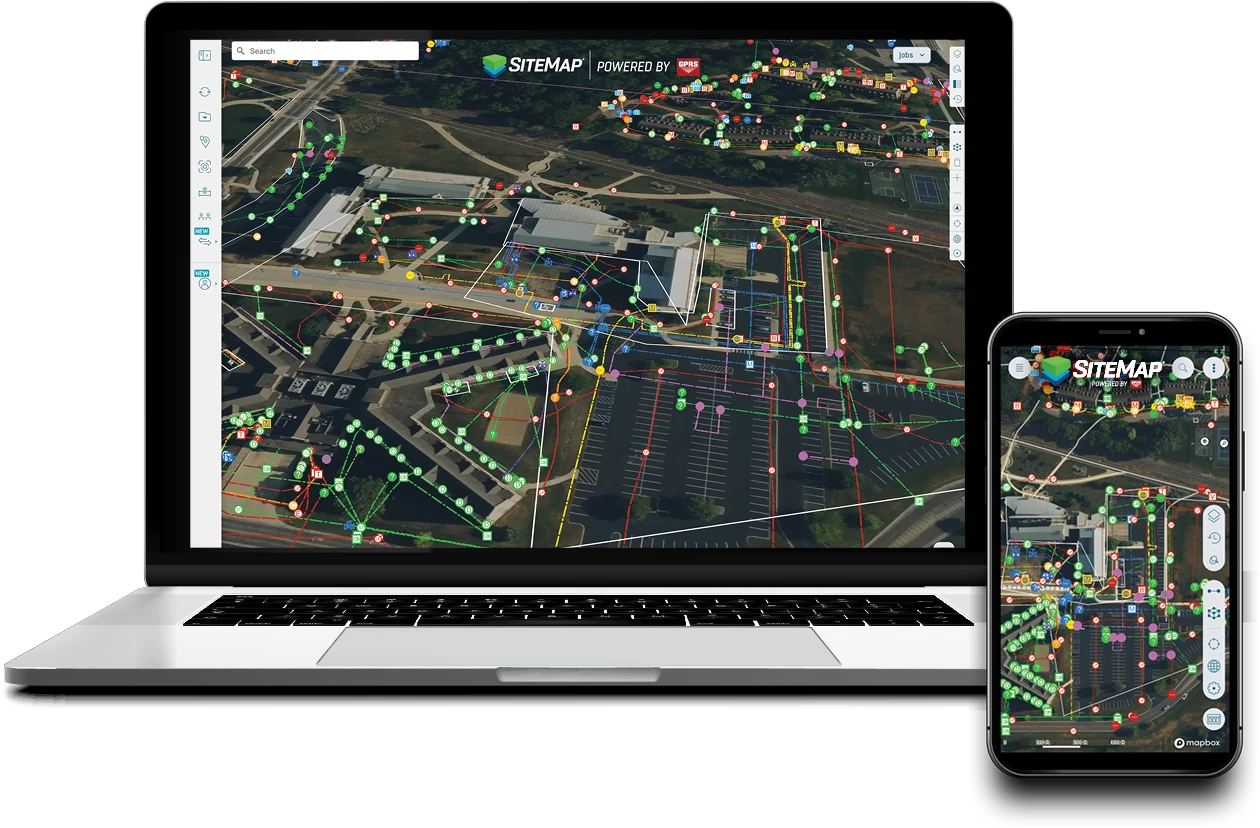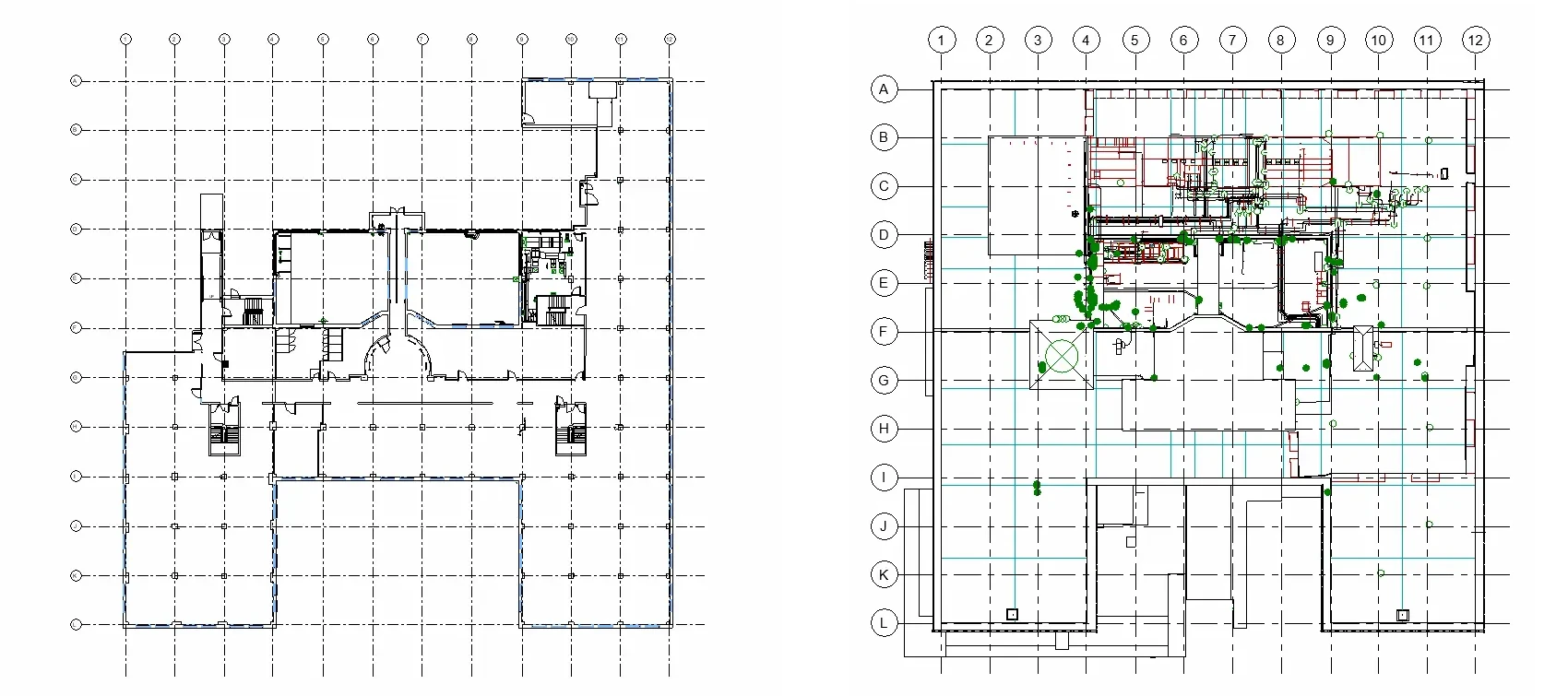Data centers are among the most sophisticated structures in the world. They house complex infrastructure, such as servers, storage systems, and networking equipment, to securely process, store, and manage digital data for business operations and online services.
Designing, building, and managing these facilities is no small task. From hyperscale campuses to edge deployments, each data center type serves a unique purpose based on organizational needs, resources, and goals. Knowing the differences and the unique construction challenges that come with each is essential if you want to build infrastructure that’s reliable, scalable, and ready for the future.

Types of Data Centers
Data centers serve a different purpose depending on an organization’s needs, resources, and goals. The main types of data centers are enterprise, colocation, cloud, managed, hyperscale, and edge.
Enterprise Data Centers
Enterprise data centers are private facilities owned and operated by a single organization for its own IT operations. They provide complete control over data and infrastructure, but require significant investment in space, power, cooling, and maintenance. Enterprise data centers are ideal for companies with the resources to manage their own infrastructure, security, and network requirements.
Colocation Data Centers
In colocation data centers, multiple organizations rent space in a shared facility to house their IT equipment. The provider takes care of the building, security, power, and cooling, while each customer manages their own servers. This is a great option for businesses that want a reliable and scalable data center without the cost and complexity of building their own.
Cloud Data Centers
Cloud data centers are networks of data centers managed by cloud service providers like Amazon Web Services (AWS), Microsoft (Azure), and Google Cloud Platform (GCP). They offer on-demand access to computing resources and services over the internet, typically on a pay-as-you-go basis. Cloud data centers are options for organizations of all sizes looking for flexibility, scalability, and reduced hardware costs.
Managed Services Data Centers
In managed service data centers, a third-party provider manages a company’s IT operations within the facility. This includes maintenance, support, and other services, which can be either fully or partially managed. This model works well for companies that want to offload the day-to-day responsibilities of IT management, while still maintaining control over their data.
Hyperscale Data Centers
These are massive facilities designed to support thousands of servers, optimized for large-scale data storage and processing. Built by or for major cloud providers, hyperscale centers offer immense capacity and scalability. They’re best suited for large enterprises and cloud platforms that handle vast amounts of data and require high-performance infrastructure.
Edge Data Centers
Edge data centers are smaller facilities located close to end-users. By processing data locally, they reduce latency and boost performance, especially for applications like IoT, autonomous vehicles, and real-time analytics. If a company’s operations depend on fast response times and real-time processing, edge data centers would be a good option.
Data Center Opportunities and Challenges
According to a McKinsey & Company article, The data center balance: How US states can navigate the opportunities and challenges, “by 2030, companies will invest almost $7 trillion in capital expenditures on data center infrastructure globally. More than $4 trillion of it will go toward computing-hardware investments, with the balance going toward areas such as real estate and power infrastructure.”
About 70 percent of that projected 2030 demand will come from hyperscale, as they work on building large campuses to capture the value of colocation data centers, resulting in sites that often cover hundreds of acres.
Data centers are also emerging in remote locations due to the demand for power, land, and cooling, which are more available outside of major metropolitan areas. Remote sites offer lower costs, access to renewable energy sources like wind and hydroelectric power, and incentives from local governments.
McKinsey & Company predicts, “states that can effectively plan, manage, and mitigate the risks of data center growth stand to unlock millions of dollars in direct and indirect growth. At the same time, they can create high-paying jobs and establish themselves as leading digital-infrastructure hubs.”
Data Center Construction Challenges
The construction of data centers demands precision, efficiency, and coordination. With millions of square feet of critical infrastructure housing thousands of servers, networking equipment, and cooling systems, even minor construction errors can lead to costly delays and operational inefficiencies.
Here are some of the challenges for data centers during new construction, expansion, retrofit, and facility management.
- Aggressive Timelines: Tight schedules are pressuring data centers to complete construction quickly, without compromising quality or safety.
- Retrofitting Existing Structures: Older buildings may have structural limitations such as low ceilings and insufficient floor loading capacity.
- Complex MEP Integration: MEP system updates, such as HVAC systems, cooling infrastructure, power distribution, and fire suppression, can be difficult to incorporate into existing infrastructure.
- Specialized Technology: Planning for server infrastructure, generators, chillers, and switchgear is essential to ensure continuous uptime and operational reliability.
- Subcontractor Coordination: Managing multiple trades requires precise sequencing and communication to avoid clashes and delays, plus ensure the facility meets technical and operational requirements.
- Regulatory Compliance: Meeting local, national, and industry-specific codes demands thorough documentation and regular inspections.

GPRS Services for Data Center Construction
Building or upgrading a data center requires extensive planning, specialized infrastructure and equipment, and close coordination across multiple trades.
GPRS helps companies design, build, operate, and maintain data centers by delivering accurate, as-built site data to expedite preconstruction planning, excavation, and execution. Precise site records helps data centers design with current building information, and reduce project risk, including design errors, subsurface damage, change orders, delays, and budget overruns.
GPRS partners with data center owners, design teams, general contractors, IT & network infrastructure teams, and commissioning agents to deliver precise documentation of what exists on-site, including utilities, structures, and systems.

GPRS Services for Data Centers:
Utility Locating Services
Identifying underground utilities, including electrical, gas, water, sewer, steam, irrigation, and telecommunication lines prior to excavation helps prevent costly damage, serious injuries, project delays, and service interruptions. Read more about GPRS Utility Locating Services.
Concrete Scanning Services
Concrete scanning detects embedded objects like rebar, post-tension cables, and conduits in concrete slabs and walls, ensuring safe coring, drilling, and cutting during build-out. Read more about GPRS Concrete Scanning Services.
Reality Capture Services
3D laser scanning uses LiDAR technology to capture highly accurate as-built conditions of the site, enabling precise planning, clash detection, and integration with BIM for streamlined construction workflows. Read more about GPRS Reality Capture Services.
Video Pipe Inspection Services
VPI services assess the condition and layout of underground sewer and storm systems, identifying blockages, structural issues, or misalignments before construction begins. Read more about GPRS Video Pipe Inspection Services.
Leak Detection Services
Early detection of hidden leaks in walls, ceilings, or underground sewers helps prevent costly repairs and downtime, ensuring critical operations remain safe and uninterrupted. Read more about GPRS Leak Detection Services.
SiteMap® GIS Software
GPRS’ secure, cloud-based platform and mobile app centralizes your project data into an interactive tool for easy access and file sharing. SiteMap provides facility managers with a comprehensive, real-time digital view of their infrastructure above and below ground, including utility maps, concrete imaging, 2D CAD drawings, 3D BIM models, NASSCO reports, and more, all customized to your project’s needs. Read more about GPRS SiteMap GIS Software.

The Benefits of GPRS Data
Optimize Site Planning and Infrastructure Layout
Accurate utility locating and concrete scanning help position critical systems like generators, cooling units, and fiber connections efficiently and safely.
Enhance Safety and Structural Integrity
By identifying embedded utilities and load-bearing elements, GPRS prevents utility strikes and structural damage during excavation and installation.
Accelerate Construction and Installation
As-built documentation enables accurate design planning to support prefabrication and streamline MEP installations to prevent costly delays during critical build phases.
Support Compliance and Quality Assurance
Provides a digital record for verifying adherence to safety, environmental, and building regulations, while aiding commissioning and QA/QC processes.
Prepare for Expansion and Maintenance
Creates a digital twin of the facility, useful for future upgrades, retrofits, and ongoing facility management.
Prevent Water Intrusion and Drainage Issues
Detects hidden sewer and storm system defects and maps drainage systems to prevent flooding and ensure proper site integration.

How GPRS Services Aid Data Center Construction and Facility Management
Data Center New Construction
Building a new data center demands meticulous planning, specialized infrastructure, and seamless coordination across multiple trades. Reliable access to power, water, and fiber connectivity is essential, and knowing the exact location of all subsurface utilities ensures compliance with dig policies for safe excavation. Accurate utility maps help position critical systems correctly, preventing delays and controlling costs. After installation, up-to-date utility maps and reality-capture as-builts can create a permanent record of actual conditions, supporting future retrofits and expansions.
Data Center Retrofit
Upgrading an existing data center often involves integrating new technologies such as enhanced power systems, advanced cooling solutions, updated data and communication lines, and modernized storage and racking. These upgrades must be executed without disrupting operations, as downtime is not an option. Detailed as-built documentation, both structural and utility, enables teams to assess current conditions, plan system layouts, and integrate new infrastructure with minimal risk. Accurate records help prevent clashes, reduce delays, and control costs, ensuring a smooth transition and continued operational reliability.
Data Center Facility Management
Data center operations rely heavily on Building Management Systems (BMS) and digital tools that streamline operations. Facility managers use these systems to optimize layouts, track assets, monitor equipment, maintain regulatory standards, environmental controls, schedule preventive maintenance, and establish comprehensive disaster recovery and business continuity plans. They can also utilize platforms like GPRS’ SiteMap® to access centralized records of utility maps, CAD drawings, and 3D models, and allow their teams to visualize spatial relationships, structural layouts, and MEP systems for informed analysis and decision-making.
Data Center Real Estate Transactions
In data center real estate transactions, digital as-builts are a valuable asset. Given the complex technical infrastructure of data centers, accurate documentation reduces liability for developers and accelerates due diligence, making transactions smoother and more efficient. For buyers, these records provide reliable insight into MEP systems, confirm compliance, inform operational planning, and support future expansion strategies.

Precision in Planning, Building, and Managing Data Center Facilities is More Important Than Ever
As data centers evolve to meet the demands of businesses, understanding their types, construction challenges and operational needs is critical to their success. From enterprise and colocation to hyperscale and edge deployments, each data center presents unique complexities. With billions of dollars pouring into data center development, precision in planning, building, and managing these facilities is more important than ever. Leveraging advanced services like utility locating, concrete scanning, and reality capture ensures safer construction, faster timelines, and smarter long-term management.
How can GPRS aid your data center construction project?
Frequently Asked Questions
What is 3D laser scanning for MEP systems and how does it work?
3D laser scanning for MEP (Mechanical, Electrical, Plumbing) systems uses LiDAR (Light Detection and Ranging) technology to capture millions of precise measurements of existing building infrastructure. A laser scanner emits pulses of light that bounce off surfaces and return to the sensor, calculating distances with ±2-4mm accuracy. This creates a detailed point cloud, a digital 3D representation of all visible MEP components including ductwork, piping, conduit, equipment, and structural elements. The point cloud is then processed and converted into accurate 2D CAD drawings and 3D BIM models for design coordination, clash detection, and construction planning.
How long does it take to scan a building and deliver MEP documentation?
Scan duration depends on building size and complexity. A typical 50,000 sq ft facility with moderate MEP complexity requires 1-2 days of field scanning. Point cloud processing and registration takes 2-3 days, and detailed BIM modeling to LOD 300-400 standards typically requires 2-4 weeks depending on system complexity and level of detail required. Rush services are available for critical path projects. Compared to traditional documentation methods which can take 3-8 weeks for the same facility, laser scanning reduces overall timeline by 50-70%. We provide preliminary point cloud data within 48 hours of scanning for immediate project needs, with final deliverables following your project schedule and priority requirements.



.svg)